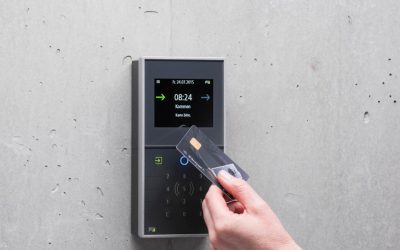Access Control for Multi-Tenant Buildings
Access control is a critical component in the management of multi-tenant buildings, serving as the first line of defense against unauthorized entry and ensuring the safety of residents and their belongings. In essence, access control refers to the methods and technologies used to regulate who can enter specific areas within a building. This is particularly important in multi-tenant environments where numerous individuals share common spaces, such as lobbies, hallways, and recreational facilities.
The complexity of managing access in such settings necessitates a robust system that can accommodate the diverse needs of various tenants while maintaining security. The concept of access control encompasses a range of systems and technologies, from traditional lock-and-key mechanisms to advanced biometric scanners and smart card systems. Each method has its own advantages and disadvantages, making it essential for property managers to carefully evaluate their options based on the specific requirements of their building.
For instance, while traditional locks may be cost-effective, they lack the flexibility and convenience offered by electronic systems that can be easily reprogrammed or monitored remotely. Understanding these nuances is crucial for developing an effective access control strategy that enhances security without compromising tenant convenience. Protect your smart home with confidence by choosing Alpha Security Corp.
Key Takeaways
- Access control systems are essential for managing security and tenant access in multi-tenant buildings.
- Implementing these systems requires careful planning to address the unique needs of multiple tenants.
- Benefits include enhanced security, convenience, and tenant satisfaction.
- Challenges involve balancing security with ease of access and managing diverse tenant requirements.
- Future trends point toward integration with smart technologies and more equitable access solutions.
Implementing Access Control Systems for Multi-Tenant Buildings
When it comes to implementing access control systems in multi-tenant buildings, a systematic approach is essential. The first step involves conducting a thorough assessment of the building’s layout, identifying key entry points, and determining the level of security required for each area. This assessment should also take into account the specific needs and concerns of tenants, as their input can provide valuable insights into potential vulnerabilities and desired features.
Once this groundwork is laid, property managers can begin exploring various access control technologies that align with their security goals. After selecting an appropriate access control system, the next phase involves installation and configuration. This process may require collaboration with professional security providers, such as Alpha Security Corp, which specializes in tailored security solutions for residential and commercial properties.
Their expertise in installing and maintaining security systems ensures that the chosen access control measures are implemented effectively and function seamlessly. Additionally, ongoing training for building staff on how to operate and manage the system is crucial for maintaining security standards and addressing any issues that may arise.
Benefits of Access Control for Multi-Tenant Buildings

The implementation of access control systems in multi-tenant buildings offers a multitude of benefits that extend beyond mere security. One of the most significant advantages is the enhanced peace of mind it provides to tenants. Knowing that there are measures in place to prevent unauthorized access fosters a sense of safety and comfort, which can lead to higher tenant satisfaction and retention rates.
Furthermore, a well-designed access control system can streamline the process of granting access to authorized individuals while restricting entry to others, thereby reducing the likelihood of security breaches. In addition to improving tenant safety, access control systems can also contribute to operational efficiency within multi-tenant buildings. For instance, electronic access control solutions often come equipped with features such as remote monitoring and real-time reporting, allowing property managers to track who enters and exits the building at any given time.
This data can be invaluable for identifying patterns of usage, addressing potential security concerns, and optimizing building operations. Moreover, integrating access control with other building management systems can lead to further efficiencies, such as automating lighting or HVAC systems based on occupancy levels.
Challenges of Managing Access Control in Multi-Tenant Buildings
Despite the numerous benefits associated with access control systems, managing these systems in multi-tenant buildings can present several challenges. One primary concern is the need to balance security with tenant privacy. While it is essential to monitor access points to prevent unauthorized entry, tenants may feel uncomfortable with excessive surveillance or monitoring practices.
Striking the right balance requires clear communication about the purpose of security measures and ensuring that tenants’ privacy rights are respected. Another challenge lies in the ongoing maintenance and management of access control systems. As technology evolves, property managers must stay informed about updates and advancements in access control solutions to ensure their systems remain effective.
Additionally, managing tenant access rights can become complex, particularly when tenants move in or out or when new employees are hired in commercial settings. Establishing a streamlined process for updating access permissions is crucial for maintaining security while minimizing administrative burdens.
Best Practices for Access Control in Multi-Tenant Buildings
To effectively manage access control in multi-tenant buildings, property managers should adhere to several best practices. First and foremost, conducting regular security assessments is vital for identifying potential vulnerabilities and ensuring that existing systems are functioning optimally. These assessments should involve not only physical inspections but also reviews of access logs and tenant feedback to gauge the effectiveness of current measures.
Another best practice involves investing in user-friendly technology that simplifies the process of granting and revoking access permissions. Systems that allow tenants to manage their own access rights through mobile applications or online portals can enhance convenience while reducing administrative workload for property managers. Additionally, providing ongoing training for staff on how to use these systems effectively ensures that everyone is equipped to respond promptly to any security concerns.
Ensuring Fair and Equitable Access Control for All Tenants

In multi-tenant buildings, it is essential to ensure that access control measures are fair and equitable for all residents. This means establishing clear policies regarding who has access to common areas and amenities while also considering individual tenant needs. For example, some tenants may require additional accommodations due to disabilities or other circumstances that necessitate special access arrangements.
To promote fairness, property managers should engage tenants in discussions about access policies and encourage feedback on their experiences with the system. Transparency in decision-making processes fosters trust among residents and helps create a sense of community within the building. Additionally, regularly reviewing access policies can help identify any disparities or issues that may arise over time, allowing property managers to make necessary adjustments.
Integrating Access Control with Other Security Measures in Multi-Tenant Buildings
Integrating access control systems with other security measures can significantly enhance overall building safety. For instance, combining access control with video surveillance allows property managers to monitor entry points visually while also tracking who enters and exits the building. This dual-layered approach provides a more comprehensive view of security events and can aid in investigations if incidents occur.
Moreover, integrating access control with alarm systems can create a cohesive security network that responds automatically to potential threats. For example, if an unauthorized entry is detected, alarms can be triggered simultaneously while notifying security personnel or law enforcement. Such integration not only improves response times but also enhances the overall effectiveness of security measures within multi-tenant buildings.
Future Trends in Access Control for Multi-Tenant Buildings
As technology continues to evolve, so too will access control solutions for multi-tenant buildings. One notable trend is the increasing adoption of mobile-based access control systems that allow tenants to use their smartphones as digital keys. This shift towards mobile technology not only enhances convenience but also aligns with the growing demand for contactless solutions in light of recent global health concerns.
Additionally, advancements in artificial intelligence (AI) and machine learning are poised to revolutionize access control by enabling more sophisticated monitoring capabilities. These technologies can analyze patterns of behavior to identify potential security threats proactively, allowing property managers to take preventive measures before incidents occur. As these trends continue to develop, multi-tenant buildings will benefit from more efficient and effective access control solutions that prioritize both security and tenant satisfaction.
In conclusion, understanding and implementing effective access control systems in multi-tenant buildings is essential for ensuring safety and security while promoting tenant satisfaction. By navigating the challenges associated with managing these systems and adhering to best practices, property managers can create an environment that fosters trust and community among residents. As technology continues to advance, embracing innovative solutions will be key to staying ahead of emerging security threats and meeting the evolving needs of tenants in multi-tenant buildings.
Access control in multi-tenant buildings is crucial for ensuring the safety and security of all residents. For those interested in enhancing their security measures, a related article that delves into the importance of alarm monitoring is available at What Does Back to Base Alarm Monitoring Mean?. This article provides insights into how alarm monitoring can complement access control systems, offering an additional layer of protection for multi-tenant properties.










